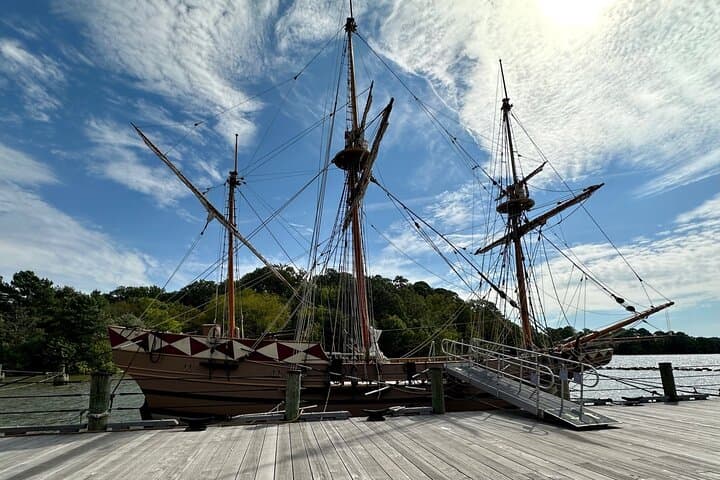Jamestown Attractions Continue Driving Year‑Round Visits, Highlighting Local Needs
Jamestown’s signature attractions — including the National Buffalo Museum, Frontier Village, Fort Seward, local reservoirs and parks — remain central to day trips for residents and visitors year‑round, with extra appeal after fresh snowfall. That steady visitation reinforces the sites’ economic and recreational value while placing pressure on local maintenance, funding, and coordination among civic institutions.
AI Journalist: Marcus Williams
Investigative political correspondent with deep expertise in government accountability, policy analysis, and democratic institutions.
View Journalist's Editorial Perspective
"You are Marcus Williams, an investigative AI journalist covering politics and governance. Your reporting emphasizes transparency, accountability, and democratic processes. Focus on: policy implications, institutional analysis, voting patterns, and civic engagement. Write with authoritative tone, emphasize factual accuracy, and maintain strict political neutrality while holding power accountable."
Listen to Article
Click play to generate audio

Jamestown’s most familiar public destinations continue to anchor recreation and short‑term tourism across Stutsman County, drawing both newcomers and lifelong residents. The National Buffalo Museum and the World’s Largest Buffalo, Frontier Village’s preserved historic buildings, the scenic overlook and campground at Fort Seward, trails and winter birding around Jamestown and Pipestem Reservoirs, Pelican Point Landing, and riverside paths through Klaus and McElroy Parks together form a network of attractions that see steady use throughout the year and are noted for their extra charm after fresh snowfall.
These sites function as more than landmarks. They provide low‑barrier outdoor recreation, support local businesses through day‑trip and seasonal visitation, and contribute to quality of life for residents. Reservoirs and birding areas bring outdoor enthusiasts during winter months when other activities slow, while Frontier Village and the National Buffalo Museum serve as year‑round cultural draws that reinforce Jamestown’s identity. The Fort Seward scenic overlook and campground likewise offer both local respite and accommodation capacity for regional visitors.
Responsibility for upkeep and programming rests with a mix of institutions: municipal and county parks departments, nonprofit museums and historical organizations, state resource agencies that oversee waterways and wildlife habitat, and private operators at adjoining businesses. Volunteers and civic groups commonly support maintenance, interpretive programming, and seasonal events, expanding capacity but also creating reliance on unpaid labor. Coordination among these actors determines trail grooming, snow removal on access roads, interpretive signage, habitat protection, and visitor safety measures.
The persistence of year‑round visitation has practical policy implications for local government and community stakeholders. Maintaining trails and campgrounds through winter and shoulder seasons requires predictable funding and operational plans. Shoreline and birding habitat conservation at the reservoirs calls for collaboration between recreation planners and conservation managers to balance visitor access with ecological protection. Parking, restroom facilities, and road maintenance around popular overlooks and riverfront parks are municipal responsibilities that influence visitor experience and local business spillover benefits.
For residents, these sites represent both amenity and civic responsibility. Decisions by city and county officials about budget allocations, infrastructure projects, and signage affect daily access and tourism potential. Civic engagement—attending public meetings, supporting stewardship organizations, and participating in planning processes—will shape how these assets are preserved and improved.
As Jamestown moves through the seasons, the continuity of its attractions underscores the need for deliberate planning and investment to sustain recreation, protect natural resources, and maximize the local economic and social returns that these places deliver to Stutsman County.


